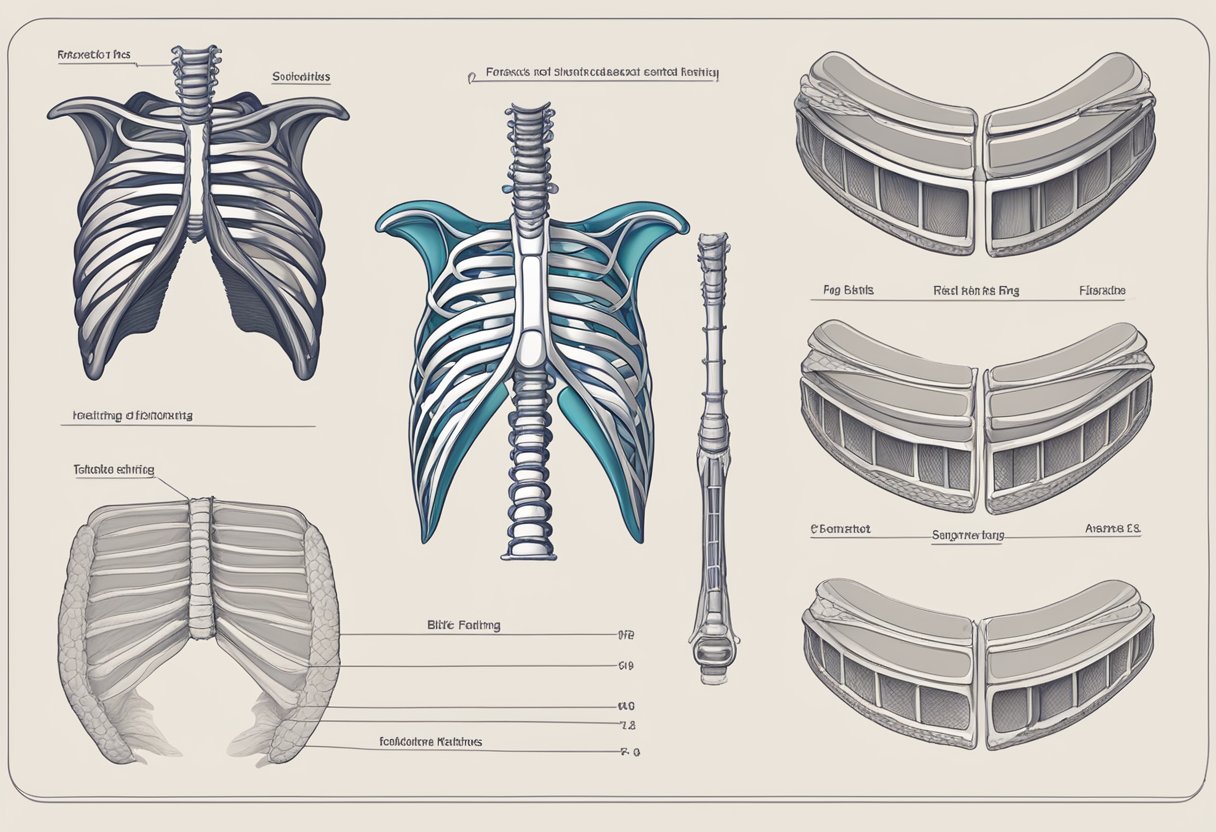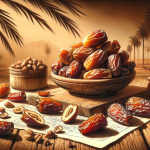Types Of Ribs
Ribs are a popular dish that can be found in many different cuisines around the world. From the classic BBQ ribs to the more exotic lamb and fish ribs, there are many different types of ribs to choose from. Understanding the different types of ribs and how to cook them can help you take your culinary skills to the next level.
Anatomy plays a big role in the different types of ribs available. Pork and beef ribs are the most common types of ribs, but there are also lamb, fish, and venison ribs. Each type of rib has a unique flavor and texture, and understanding the anatomy of the rib can help you choose the best cut for your dish. Cooking techniques also play a significant role in the final outcome of your ribs. Smoking and grilling are popular techniques that can add a smoky flavor to your ribs, while baking and braising can create a tender, juicy texture.
Key Takeaways
- Understanding the anatomy of ribs can help you choose the best cut for your dish.
- Different cooking techniques can significantly impact the flavor and texture of your ribs.
- There are many different types of ribs to choose from, including pork, beef, lamb, fish, and venison.
Anatomy of Ribs

Ribs are the curved, flat bones that form the rib cage or thoracic cage. The rib cage consists of 12 pairs of ribs, which are attached to the spine at the back and to the sternum at the front. The ribs play a crucial role in protecting the organs of the thoracic cavity, including the lungs, heart, and major blood vessels.
Pork Rib Cuts
Pork ribs are classified into two main types: back ribs and spare ribs. Back ribs, also known as baby back ribs, are the ribs that come from the upper part of the pig’s rib cage. They are shorter and curved than spare ribs and have less meat. Spare ribs, on the other hand, are the ribs that come from the lower part of the pig’s rib cage. They are longer, flatter, and meatier than back ribs.
Beef Rib Cuts
Beef ribs are classified into two main types: short ribs and back ribs. Short ribs are the ribs that come from the lower part of the cow’s rib cage. They are shorter and meatier than back ribs and are commonly used in stews and braises. Back ribs, also known as beef ribs, are the ribs that come from the upper part of the cow’s rib cage. They are longer and curved than short ribs and are commonly used in barbecue.
Other Types of Ribs
Apart from pork and beef ribs, there are other types of ribs as well, such as lamb ribs, venison ribs, and bison ribs. These ribs are similar in structure and function to pork and beef ribs and can be cooked in similar ways.
The ribs consist of several parts, including the shaft or body, head, neck, groove, tubercle, and anterior extremity. The shaft or body of the rib is the long, curved part of the rib. The head of the rib is the part that articulates with the spine. The neck of the rib is the part that connects the head to the shaft. The groove of the rib is the depression on the lower surface of the shaft that houses the intercostal vessels and nerves. The tubercle of the rib is the small, rounded projection on the posterior surface of the rib that articulates with the transverse process of the vertebra. The anterior extremity of the rib is the part that articulates with the sternum.
In summary, the anatomy of ribs includes several parts that make up the rib cage, which protects the organs of the thoracic cavity. Pork and beef ribs are the most common types of ribs, but other types of ribs are also available. Understanding the anatomy of ribs is important for cooking and understanding the function of the rib cage.
Cooking Techniques
Grilling and Barbecuing
Grilling and barbecuing are popular cooking methods for ribs. Grilling involves cooking the ribs over an open flame, while barbecuing involves slow-cooking the ribs over indirect heat. Both methods produce delicious, smoky flavors that are perfect for ribs.
When grilling or barbecuing ribs, it’s important to use a marinade or rub to add flavor and help tenderize the meat. A simple marinade can be made with ingredients like garlic, soy sauce, and brown sugar, while a rub can be made with a combination of spices like paprika, cumin, and chili powder.
Smoking
Smoking is another popular cooking method for ribs. This method involves slow-cooking the ribs over low heat and smoke, which infuses the meat with a rich, smoky flavor. Smoking can be done with a smoker or a grill that has a smoker attachment.
When smoking ribs, it’s important to use a wood that complements the flavor of the meat. Popular woods for smoking ribs include hickory, apple, and mesquite. It’s also important to use a dry rub to add flavor and help tenderize the meat.
Braising and Roasting
Braising and roasting are other cooking methods that can be used for ribs. Braising involves cooking the ribs in liquid, while roasting involves cooking the ribs in an oven.
When braising or roasting ribs, it’s important to use a flavorful liquid like broth or wine to add flavor and help tenderize the meat. A dry rub can also be used to add flavor before cooking. Low and slow cooking is key for both of these methods to ensure that the meat is tender and juicy.
Overall, there are many different cooking techniques that can be used for ribs, each with its own unique flavor and texture. Whether grilling, smoking, braising, or roasting, it’s important to use high-quality ingredients and take the time to cook the ribs properly for the best results.
Flavor and Seasoning
When it comes to ribs, flavor and seasoning are key components of a delicious meal. There are many ways to add flavor to ribs, including marinades, rubs, sauces, and glazes.
Marinades and Rubs
Marinades and rubs are both great ways to add flavor to ribs. Marinades are typically made with acidic ingredients such as vinegar, wine, or citrus juice, along with herbs and spices. These ingredients help to tenderize the meat and infuse it with flavor. Rubs, on the other hand, are a dry mixture of herbs and spices that are rubbed onto the meat before cooking. They create a flavorful crust on the outside of the meat and can be used alone or in combination with a marinade.
Some popular ingredients for marinades and rubs include mustard, chili, and wine. Mustard can help to tenderize the meat and is a great base for a rub or marinade. Chili adds heat and flavor, while wine can add depth and complexity to the marinade.
Sauces and Glazes
Sauces and glazes are another way to add flavor to ribs. Barbecue sauce is a popular choice for ribs, and there are many different types to choose from. Some are sweet, while others are tangy or spicy. Barbecue sauce can be applied during cooking or served on the side for dipping.
Glazes are another option for adding flavor to ribs. They are typically made with a combination of sweet and savory ingredients, such as honey, soy sauce, and garlic. Glazes can be brushed onto the ribs during cooking or applied at the end for a sticky, sweet finish.
When choosing a sauce or glaze, it’s important to consider the marbling of the meat. If the meat is well-marbled, a sweeter sauce or glaze may be a better choice, as it will help to balance out the richness of the meat. If the meat is leaner, a tangy or spicy sauce may be a better option, as it will help to cut through the meat’s natural flavor.
Selecting Quality Ribs
When it comes to selecting quality ribs, there are a few key factors to consider. Understanding meat quality and seeking advice from your local butcher can help you find the perfect cut for your next meal.
Understanding Meat Quality
The quality of meat can vary greatly depending on a number of factors, including the breed of animal, its diet, and the conditions in which it was raised. When selecting ribs, it’s important to look for meaty and fattier cuts that will provide plenty of flavor and moisture.
Fat content is an important factor to consider when selecting ribs. While a lean cut of meat may be healthier, it may also be less juicy and tender. Meat with a higher fat content will typically be more flavorful and tender, but it’s important to balance this with your dietary needs.
Butcher’s Advice
When it comes to selecting quality ribs, your local butcher can be an invaluable resource. Meatpackers and butchers have extensive knowledge of different cuts of meat and can provide guidance on selecting the best quality ribs for your needs.
Butchers can also provide advice on cooking methods and seasoning to ensure that your ribs are cooked to perfection. Don’t be afraid to ask for recommendations or to try something new ‚Äì your local butcher is there to help you find the perfect cut of meat for your next meal.
In summary, selecting quality ribs involves understanding meat quality and seeking advice from your local butcher. Look for meaty and fattier cuts to provide plenty of flavor and moisture, and consider the fat content to balance flavor and dietary needs. Your local butcher can provide invaluable advice on selecting the best quality ribs and cooking them to perfection.
Serving and Presentation
When it comes to serving and presenting ribs, there are a few things to keep in mind. Firstly, the texture of the ribs should be taken into consideration. Ribs with a meaty texture, such as prime rib roast, ribeye steaks, and lamb riblets, should be cooked to medium-rare or medium to ensure that they remain tender and juicy.
For larger, meatier cuts of ribs such as dinosaur ribs or boneless short ribs, slow-cooking methods such as smoking or braising can help to break down the connective tissue and create a more tender texture.
Spareribs, on the other hand, have a tougher texture and are best cooked low and slow to ensure that they become tender and fall-off-the-bone. They are often served with a variety of sauces, such as barbecue sauce or honey mustard, to enhance their flavor.
In terms of presentation, ribs can be served on a platter or individual plates, garnished with herbs or a sprinkle of sea salt. A side of coleslaw or potato salad can complement the rich, meaty flavor of the ribs. It is also important to provide guests with plenty of napkins or wet wipes, as ribs can be messy to eat.
Overall, serving and presenting ribs can be a fun and flavorful experience. By taking into account the texture of the ribs and using the appropriate cooking methods, one can create a delicious and memorable meal that is sure to impress.






